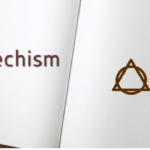This is part of a series of posts on Romans. The main focus of this series will be chapters 9-11 of the letter. These chapters, particularly chapter 9, have been interpreted in various different ways. My aim is to demonstrate what I consider to be the correct interpretation. I will do this by considering the structure and context of the letter and then focusing in on these chapters, showing how the proposed interpretation fits with the context and structure of the letter, as well as being internally consistent within chapters 9-11. Click here for the contents page.
Having had an introduction to some of Paul’s foundational teaching in Romans 3:1-4:25 (the C1 section), we’re ready to turn our focus on to chapters 9-11 (the C2 section). Before getting an overview of the structure of chapters 9-11, we will use the diagrams from the previous post to see how Paul refers to these different groups of people in chapters 9-11. Paul uses a lot of different terms to refer to these groups, which can get confusing. In the diagrams below, I’ve collected the different terms used by Paul in these chapters, and put them on the appropriate diagram to show what Paul means by each term. I’ve given one chapter and verse reference for each term, but some terms are used multiple times by Paul.
To make matters potentially even more confusing, Paul sometimes gives the same word more than one meaning, and we have to use the context of the word to work out what he means by it. This is most apparent with Paul’s use of the word “Israel”. Paul uses the word “Israel” in three different ways, as we’ll see. “Israel” can refer to:
1. all ethnic Israelites (9:6 (1st), 9:27, 11:2, 11:25)
2. ethnic Israelites who are not trusting in Jesus (which is the majority of ethnic Israelites at Paul’s time of writing) (9:31, 10:19, 10:21, 11:7)
3. true Israel (all who have faith in Christ – including some ethnic Israelites and some Gentiles) (9:6 (2nd), 11:26)
Aside: some may consider that “true Israel” (option 3) includes only some ethnic Israelites and not some Gentiles as well. I’ll address this in a later post, but the answer to that doesn’t affect the other points I’ll be making.
The first diagram shows the world according to ethnicity:
The solid line between the two categories shows that the division is a fixed one. An ethnic Israelite will always be an ethnic Israelite, and a Gentile will always be a Gentile. If salvation were based on ethnicity, then that would be good news for all ethnic Jews, and bad news for all Gentiles. Thankfully, salvation isn’t based on ethnicity! The gospel is good news for all, not just a lucky few, as we will see.
The next diagram shows the world according to Paul:
Paul divides the world into those who are trusting in Jesus and those who are not. The dashed line dividing the two groups shows that, although the two categories are fixed in status, it is possible for an individual person to cross the dividing line and have his or her category changed. For example, when a Gentile becomes a Christian, he or she crosses from being “not true Israel” to being “true Israel”. Paul talks about this in 11:17-24 (which we will consider in more detail later). The olive tree from these verses represents true Israel and the branches are individual people. The branches connected to the olive tree represent believers. Paul speaks, regarding both Israelites and Gentiles, of branches (i.e. people) being grafted into the tree due to belief and being cut off the tree due to unbelief.
The dashed line represents one of the main reasons that Paul’s gospel message really is “good news” – anyone hearing the message who isn’t yet in the “true Israel” category is able, thanks to God working in their heart via the gospel message, to trust in Christ and find themselves crossing the divide into the “true Israel” category.
In the final diagram, we see Paul’s divisions mapped out in the two ethnic groups – ethnic Israelites can be internally divided into “true Israel” and “not true Israel”, and Gentiles can also be internally divided in this way. The full “true Israel” is a combination of the “true Israel” of both ethnic groups.
Again we have dashed lines showing that individuals can cross over from one category to the other. A good example of this is 9:25, which talks about Gentiles: “I will call them ‘my people’ who are not my people; and I will call her ‘my loved one’ who is not my loved one”. When a Gentile becomes a Christian, they get their category changed from “not one of God’s people” to “one of God’s people” and from “not God’s loved one” to “God’s loved one”. What a great blessing to the Gentiles!
We’re now ready to get going properly on Romans 9-11. It will be important to keep the background of these first few posts in mind as we do so. Let’s go!
This was first published at the Predestination Station, where comments can be made.








